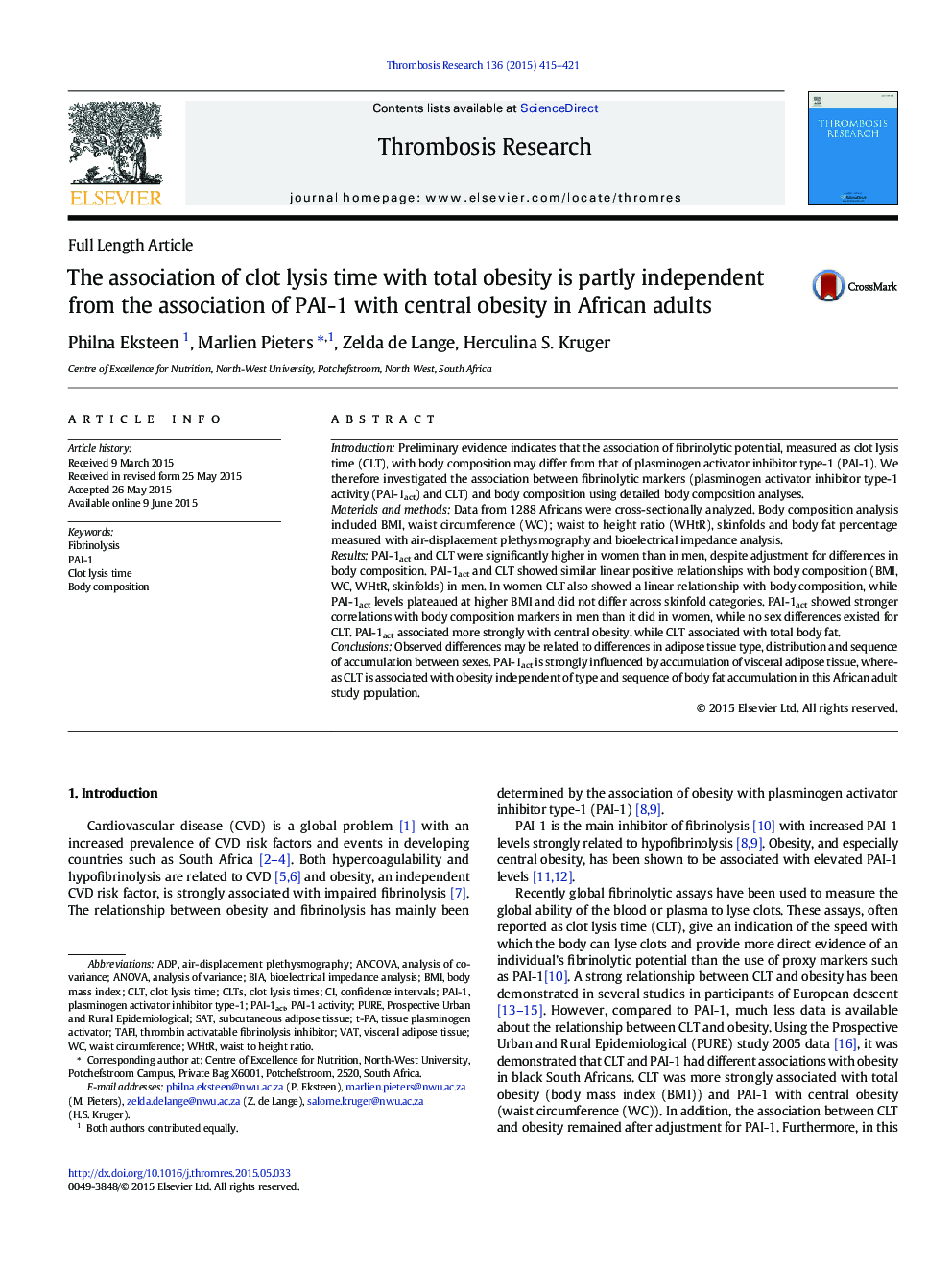| Article ID | Journal | Published Year | Pages | File Type |
|---|---|---|---|---|
| 6001332 | Thrombosis Research | 2015 | 7 Pages |
â¢Although PAI-1 associated with central adiposityâ¢CLT associated with total obesity independent of region and sequence of fat depositionâ¢Association of CLT with total obesity is, at least in part, independent of PAI-1actâ¢Association of PAI-1 with body composition demonstrated sex differencesâ¢Likely due to difference in adipose tissue distribution and sequence of accumulation
IntroductionPreliminary evidence indicates that the association of fibrinolytic potential, measured as clot lysis time (CLT), with body composition may differ from that of plasminogen activator inhibitor type-1 (PAI-1). We therefore investigated the association between fibrinolytic markers (plasminogen activator inhibitor type-1 activity (PAI-1act) and CLT) and body composition using detailed body composition analyses.Materials and methodsData from 1288 Africans were cross-sectionally analyzed. Body composition analysis included BMI, waist circumference (WC); waist to height ratio (WHtR), skinfolds and body fat percentage measured with air-displacement plethysmography and bioelectrical impedance analysis.ResultsPAI-1act and CLT were significantly higher in women than in men, despite adjustment for differences in body composition. PAI-1act and CLT showed similar linear positive relationships with body composition (BMI, WC, WHtR, skinfolds) in men. In women CLT also showed a linear relationship with body composition, while PAI-1act levels plateaued at higher BMI and did not differ across skinfold categories. PAI-1act showed stronger correlations with body composition markers in men than it did in women, while no sex differences existed for CLT. PAI-1act associated more strongly with central obesity, while CLT associated with total body fat.ConclusionsObserved differences may be related to differences in adipose tissue type, distribution and sequence of accumulation between sexes. PAI-1act is strongly influenced by accumulation of visceral adipose tissue, whereas CLT is associated with obesity independent of type and sequence of body fat accumulation in this African adult study population.
